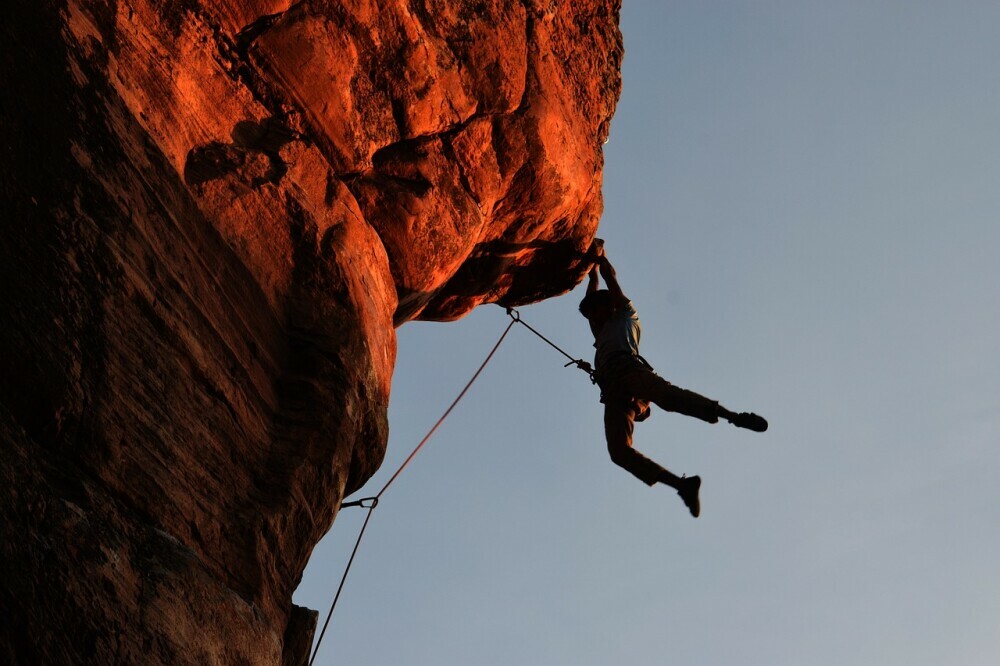
Scaling New Heights: A Beginner’s Guide to Rock Climbing
Have you ever gazed up at a towering rock face and felt a tug of adventurous spirit? Rock climbing might be the answer to your call for thrills and a unique way to connect with nature. But where do you even begin? This guide will equip you with the essentials to embark on your rock climbing journey.
Beyond the Sport: A Way of Life
Rock climbing is more than just a physical activity; it’s a community, a challenge, and a chance to push your limits. Whether you’re drawn to the mental focus required to plan your ascent or the exhilaration of conquering a challenging route, rock climbing offers a unique blend of physical and mental rewards. The benefits extend beyond the climb itself, promoting:
- Physical Fitness: Rock climbing builds incredible upper body strength, core stability, and improved coordination.
- Mental Toughness: Overcoming fear and problem-solving on the wall translate into resilience and mental fortitude in everyday life.
- Focus and Concentration: Climbing demands complete focus and a clear mind, sharpening your concentration skills.
Rock Climbing 101: Different Styles for Different Thrill-Seekers
The world of rock climbing offers diverse styles to suit your preference:
- Bouldering: Conquer short, challenging climbs without ropes, using crash pads for safety.
- Sport Climbing: Ascend pre-bolted routes with ropes and a belayer (climbing partner) for safety.
- Traditional Climbing (Trad): Place your own protective gear on the rock face as you climb for a more adventurous experience. (This requires advanced skills and training!)
Gearing Up for Success: Essential Equipment for Beginners
Safety is paramount in climbing. Here’s what you’ll need to get started:
- Climbing Shoes: Choose shoes that fit snugly and offer good grip.
- Harness: Distributes your weight in case of a fall.
- Belay Device: Used by your belayer to control the rope and secure you during your climb. (For sport climbing)
- Carabiners: Connect your climbing rope to your harness and the belay device.
- Chalk Bag: Keeps your hands dry for better grip. (Optional for bouldering)
- Crash Pads: Essential for safe falls in bouldering.
Safety First: Learning the Ropes (Literally!)
Never underestimate the importance of proper instruction. Find a certified climbing gym or guide for your first climb. They’ll teach you:
- Basic Knots: Essential for securing your rope and belaying your partner safely.
- Belay Techniques: How to control the rope and ensure your partner’s safety during their climb.
- Proper Climbing Technique: Learn efficient footwork, hand placement, and body movements to conserve energy and climb effectively.
Building Your Skills: Training Tips for Budding Climbers
Climbing requires both physical and mental strength. Here’s how to improve:
- Strength Training: Focus on exercises that build upper body strength, core stability, and grip strength.
- Cardio: Enhance your endurance for longer climbs.
- Mental Training: Practice visualization techniques to conquer fear and plan your ascent.
- Gym vs. Outdoors: Indoor climbing gyms offer a controlled environment to learn basic techniques. Once comfortable, progress to outdoor climbing under the guidance of an experienced climber.
- Route Reading: Develop the ability to analyze a climb, identify the best hand and foot placements, and plan your ascent strategy.
Joining the Climbing Community: More Than Just Scaling Walls
Rock climbing is a social sport. Here’s how to connect with your fellow climbers:
- Climbing Gyms: Gyms offer group climbing sessions, workshops, and a chance to meet like-minded individuals.
- Climbing Organizations: Support local climbing organizations that maintain climbing areas and advocate for responsible climbing practices.
- Climbing Festivals: Immerse yourself in the climbing community at festivals that offer workshops, competitions, and opportunities to connect with professional climbers.
Respecting the Rock: Climbing Ethics and Stewardship
Rock climbing thrives on respect for the environment and established climbing practices:
- Leave No Trace: Minimize your impact on the climbing area by packing out all trash and respecting local regulations.
- Minimize Chalk Use: Excessive chalk use can damage rock formations. Use chalk sparingly and only when necessary.
- Respect Climbers of All Levels: Be courteous and share the climbing routes.
The Climb Awaits: Start Your Rock Climbing Journey Today!
Rock climbing offers a unique blend of physical challenge, mental focus, and a deep connection with nature. With the right equipment, proper training, and a commitment to safety and responsible climbing practices, you’

